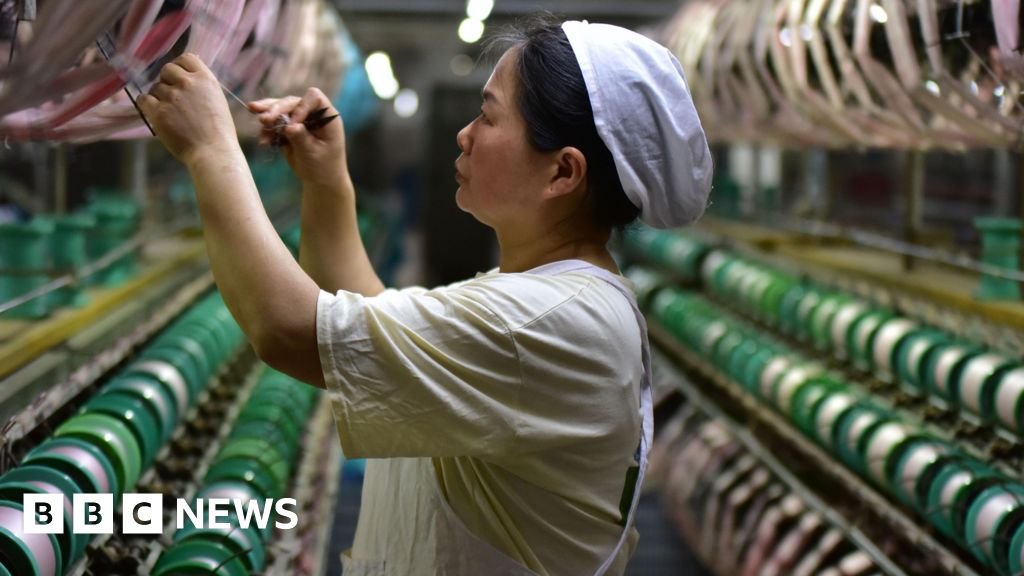After experiencing record job loss during the pandemic, women are back to work. But don't start celebrating yet.
Finally, there's some good news for women workers. After a three-year period that saw their workforce participation plummet – so severe, it was labelled the "she-cession" – scores of women are actively searching for jobs. Many are finally back to work.
It's been a long road. During the pandemic, women were disproportionately affected by job losses; since 2020, they've been dropping out of the workforce in record numbers, largely to tend to caring responsibilities (particularly mums of colour). Meanwhile, employment sectors that women workers have traditionally been dominated – such as education, nursing and hospitality – took the brunt of job losses during lockdowns and social distancing.
Even as many people re-joined the workforce, women returned at a slower pace than men. April 2022 figures from the US Chamber of Commerce showed that while the unemployment rate for men had returned to a pre-pandemic figure of 3%, the rate for women remained at a pandemic-high 4.1%.
However, June 2023 data from the Bureau of Labor Statistics (BLS) shows women, particularly those aged 25 to 54, are back in the workforce at the highest rate since the pandemic. As for mums specifically, August data from The Hamilton Project shows the number of women in the workforce with children is higher than it's ever been – even higher than pre-pandemic figures.
It's encouraging news – but don't break out the confetti just yet. Even as women return, they’re still facing entrenched systemic issues keeping them from parity and progress. And women's ability to continue returning – and stay employed – is more precarious than it may seem.
Experts didn't initially view pandemic unemployment levels as a gendered problem, says John Frehse, senior managing director at consulting firm Ankura, based in New York. Yet as the pandemic wore on, it became clear women were being disproportionately affected by job loss. Shouldering caring responsibilities as well as performing the brunt of frontline roles pushed women out of the labour force, due to both stress and necessity.
But after long periods of joblessness and burnout, women are bouncing back. The US labour force lost more than 4 million women between February 2019 and February 2020; since then, women's employment has been rising, leading to current record numbers of women in the workforce – now topping pre-pandemic levels.
Jessica Kriegel, chief scientist of workplace culture at Culture Partners, is not surprised by the return to work.
For one, women have flexibility they didn't during the pandemic, because of changes in the workplace. The rise of remote- and hybrid models provides a crucial lifeline for carers to balance work and personal responsibilities; it's not that the issues women were juggling during the pandemic have gone away, but they've become easier to manage with more options. The normalisation of arrangements such as virtual meetings and tools that allow for asynchronous work have enabled women – and workers in general – to return to employers that foster better work-life balance.
During the pandemic, says Frehse, many women had to make choices between household duties and an income – they were working for a pay cheque while also caring for children and elder parents. Unable to both jobs, many dropped out of the workforce with little choice. The expansion of this workplace flexibility and the reopening of schools and childcare centres means women have more options and mobility that enable them to get back to work.
It's also become a financial necessity, says Kriegel. "We're being faced with inflation [and] economic uncertainty. There [are] a lot of challenges right now that put fear in people and makes them want to create psychological safety for themselves and their families."
Although data shows more women are returning to the workforce now, they're still doing so on the back foot. Amid the encouraging news, the reality is women are returning to many of the same issues that have long plagued the workplace, well before the pandemic – and their future is more uncertain than men's.
The enduring lack of pay parity is one issue. While July 2023 data from the BLS showed that the wage gap is the lowest it has been since 1979, women still make just 83% of what men earn, and that figure widens for black, Hispanic and indigenous women as well as women 35 years and older.
Also, in homes with male-female partnerships, Kriegel says much of the domestic labour still falls on women, just as it has in the past, regardless of whether they are in the workforce. For one, this makes them highly susceptible to burnout, which was a leading cause of women leaving jobs during the pandemic. And if women find they are unable to balance both work and home demands when they take new jobs, they will likely be the first ones out, prioritising their male partners' higher salaries.
The uncertain future of both the workplace and public health at large also means women are more vulnerable than men to future job loss.
For instance, the remote- and flexible arrangements that have enabled many women back to are threatened as executives are now calling workers back to the office, often mandating attendance with the consequence of job loss. If a return to majority in-person work becomes unavoidable, women who need the flexibility to both remain in the workforce as well as perform caring and home duties face a major problem.
Even if women are able to retain their necessary arrangements, they may be affected by proximity bias or flexibility stigma – phenomena in which bosses advantage in-person workers whom they can see, even unconsciously. Kriegel says this is especially the case if "their employers are overtly saying that in-person work is superior to remote work, or if they work remotely more often than men".
Gina Cardazone, research principal at LeanIn, agrees the situation is precarious. She warns that if unemployment increases, employers may gain more power, ultimately giving employees less of what they want – which could be a direct hit to women.
As the economy remains uncertain, the progress women are making in the job market is encouraging, but also precarious. Ultimately, we shouldn't ignore the good news for women workers. But it's just as important to understand this progress is hanging by a thread, especially if employers don't rise to the occasion.
Watch what happens when we try to take one of the world's oldest motor homes, a 1935 Pontiac, for a spin.
The fitness influencer went silent after a story about her fiancee allegedly cheating went viral.
David Waddell says markets have sniffed out that there are reasons to be less pessimistic in this environment.
A weekly summary of the big stories from financial markets around the world.
An art critic uncovers mysteries from this ancient culture within Saudi Arabia's sandy landscape.
Can AI help this BBC reporter simplify her perfume choices?
So rare they were thought to be a myth and undertake arduous journeys of up to 100 miles to find water.
The dam at Marsh Lake, Minnesota, has created an unexpected opportunity for pelicans.
The Travel Show visits an immersive experience that brings to life a brutal battle between Iceland's Vikings.
The renowned conductor and music director of the Met Opera reveals how a calling became his lifelong journey.
Researchers have created a pacemaker smaller than a grain of rice that does not require open surgery to implant.
There is a difference between our chronological and biological age, which we have the power to control.
Malaysia's minister Zafrul Aziz will be representing the ASEAN bloc in its negotiations with the US.
From a shipwrecking yard in Bangladesh to a river of iron dioxide in Canada, a deep dive in Ed Burtynsky's work.
It takes three years for an otter cub to master the complexities of a successful hunt.
The Travel Show sets off on a journey to celebrate an instantly recognisable travel icon, the VW campervan.
A weekly summary of the big stories from financial markets around the world.
'Off-Map Destination' winner Wolfgat offers a menu made from hyper-local and foraged ingredients.
Tech sector venture capitalist says the global economic uncertainty will mean less investment for private equity.
Tech Now visits Zambia to see how Bitcoin is helping to provide villagers with electricity.
As Romania's bear population grows, so do the opportunities for travellers to come face to face with the predators in a responsible way.
The CIA officer spent nearly a decade selling secrets to the Soviet Union, leading to the deaths of at least 10 Western agents. In 1994, the BBC spoke to one of the spies he betrayed.
Earwax can contain valuable indicators to a person's health. Now scientists are analysing its chemistry in the hope of finding new ways of diagnosing diseases.
Running from Inverness to Britain's most northerly junction, the Far North Line passes through sheep meadows, traditional villages and the world's only Unesco-listed blanket peat bog.
Turning lawns into meadows can have big benefits for people, wildlife and the climate. Here's why 'meadowscaping' has become the latest gardening craze.
Copyright 2025 BBC. All rights reserved. The BBC is not responsible for the content of external sites. Read about our approach to external linking.
Women's employment hangs by a thread – BBC



